
Hürtgen Forest - Game Video
Valor & Victory – Stalingrad 1942 Scenario (Pavlov’s House)
Oriskany Jim and community member Andrew “Brucelea” go head-to-head in a scenario of Barry Doyle’s “Valor & Victory” system, set in one of the most brutal and savage battles in the annals of warfare.
This is Stalingrad in late 1942, a truly apocalyptic struggle that would ultimately prove the most important event in turning the tide of Word War II. Yet even in a fight this massive, small unit actions could still make a crucial difference.
Once of these was Pavlov’s House, where a lone platoon of 42nd Guards Rifle Regiment (13th Guards Rifle Division) blocked part of the German advance toward the Volga River for an unbelievable 58 days
Come see the game live and be part of the show!
Sunday, September 26 – 2PM East US Time, 7PM UK Time
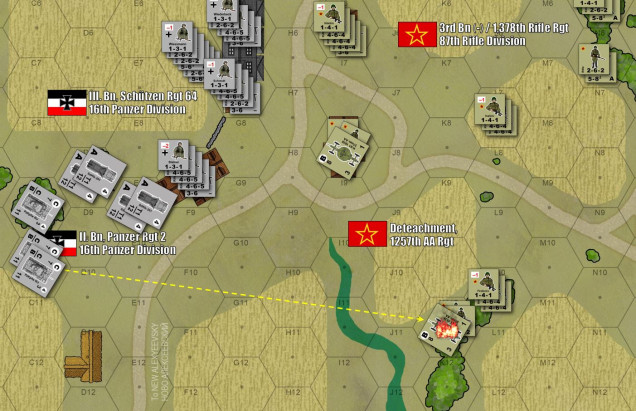 Here are some of the Stalingrad scenarios I have designed / playtested I've done so far. First one depicts part of 16th Panzer Divisions breakout from the Vertyachi Bridgehead (24 August 1942), where crumbling remnants of the 87th Rifle Division (furture 13th Guards Rifle) is supported by elements of the 1257th AA Regiment, made up of female reservists.
Here are some of the Stalingrad scenarios I have designed / playtested I've done so far. First one depicts part of 16th Panzer Divisions breakout from the Vertyachi Bridgehead (24 August 1942), where crumbling remnants of the 87th Rifle Division (furture 13th Guards Rifle) is supported by elements of the 1257th AA Regiment, made up of female reservists. 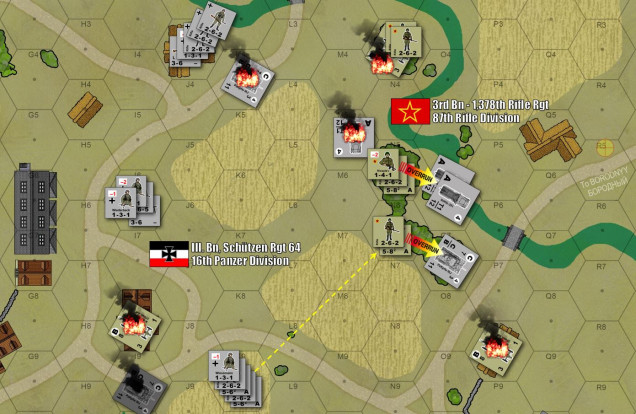 The battle at Vertyachi gets desperate, with German PzKpfw IIIs and halftracks blasting out of the tall corn and sunflower fields to overrun Soviet mortar crews ... trying to get to those breakthrough objective hexes on time.
The battle at Vertyachi gets desperate, with German PzKpfw IIIs and halftracks blasting out of the tall corn and sunflower fields to overrun Soviet mortar crews ... trying to get to those breakthrough objective hexes on time.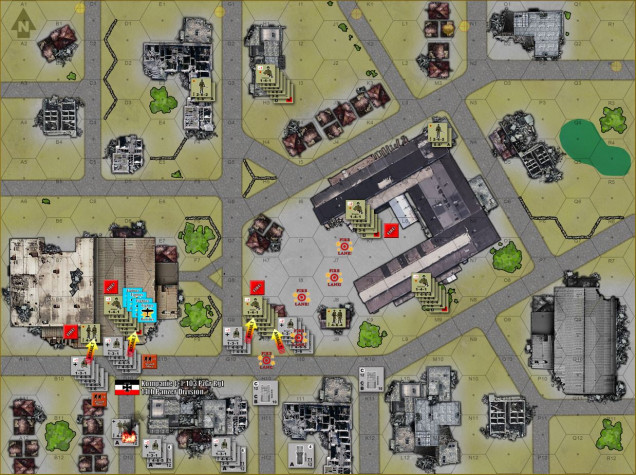 Scenario 02, the first German assualts into Stalingrad proper (13 and 14 September 1942), with elements of 14th Panzer Division smashing into the Yelshanka suburbs along Stalingrad's southern shoulder.
Scenario 02, the first German assualts into Stalingrad proper (13 and 14 September 1942), with elements of 14th Panzer Division smashing into the Yelshanka suburbs along Stalingrad's southern shoulder.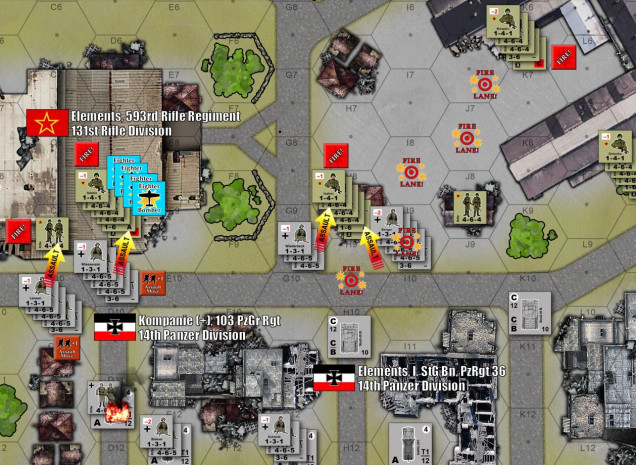 A close up of the first furious German assualt, supposed by close air strike of Stukas and gunfire suppression from StuG-IIIB assualt guns.
A close up of the first furious German assualt, supposed by close air strike of Stukas and gunfire suppression from StuG-IIIB assualt guns. Scenario 3, the Railroad Station (16 September 1942). As Soviet commander General Chuikov finally gets permission to bring some of his reinforcements across the river, he hurriedly ferries across the newly re-built 13th Guards Rifle Division. With no vehicles and short on heavy equipment, 10,500 men cross the river and are immediately hurled into the worst of the fighting, right at the gargantual Soviet train station.
Scenario 3, the Railroad Station (16 September 1942). As Soviet commander General Chuikov finally gets permission to bring some of his reinforcements across the river, he hurriedly ferries across the newly re-built 13th Guards Rifle Division. With no vehicles and short on heavy equipment, 10,500 men cross the river and are immediately hurled into the worst of the fighting, right at the gargantual Soviet train station.








































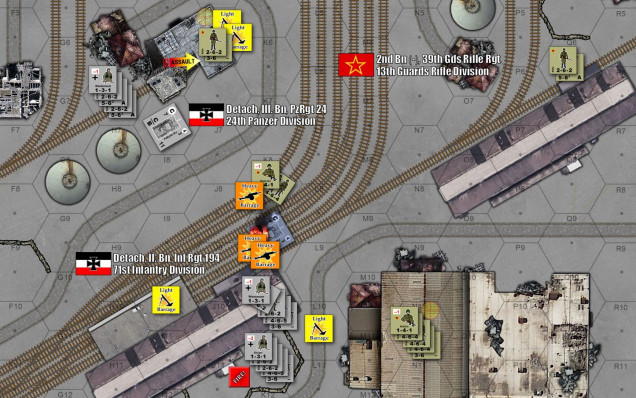































Leave a Reply